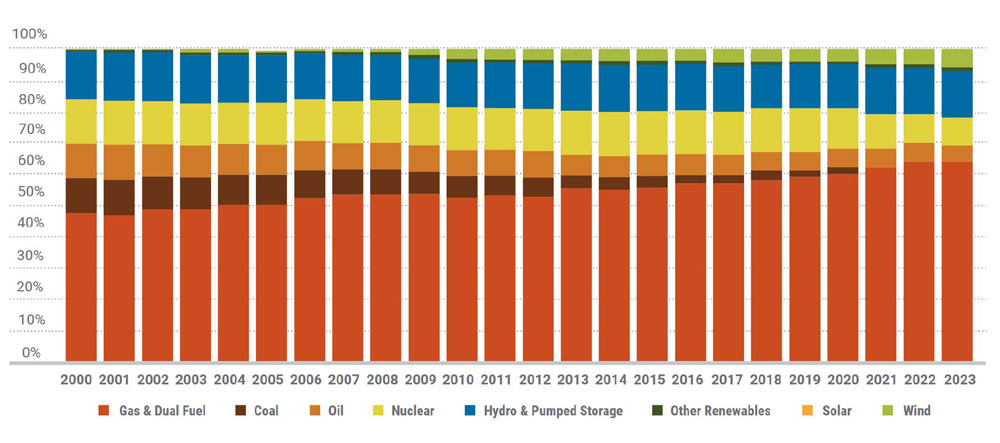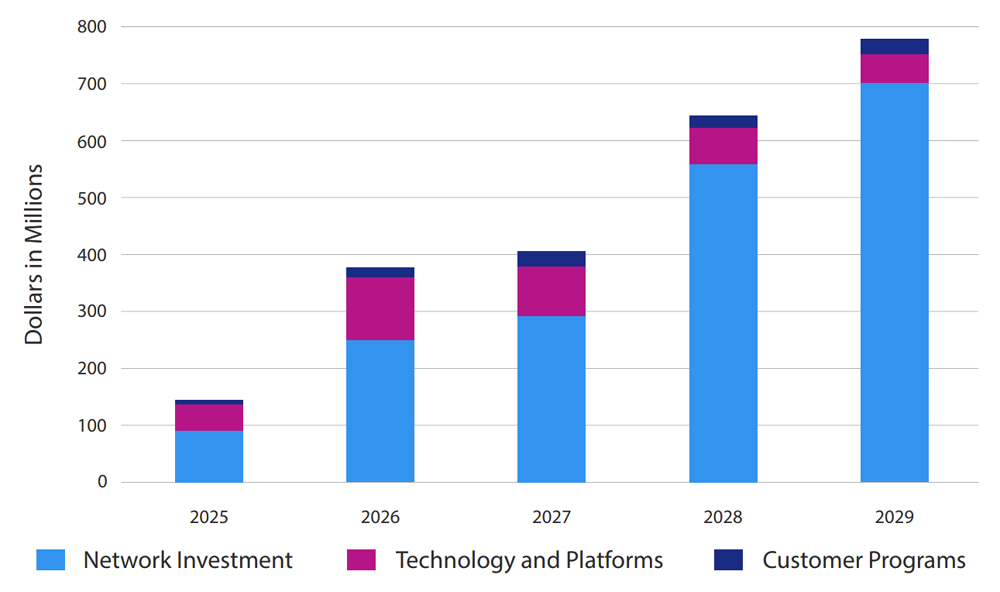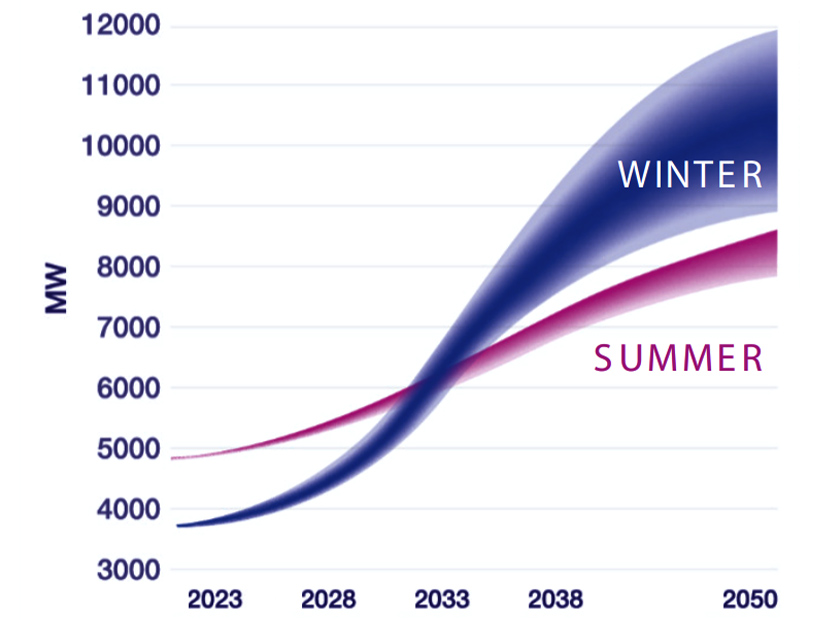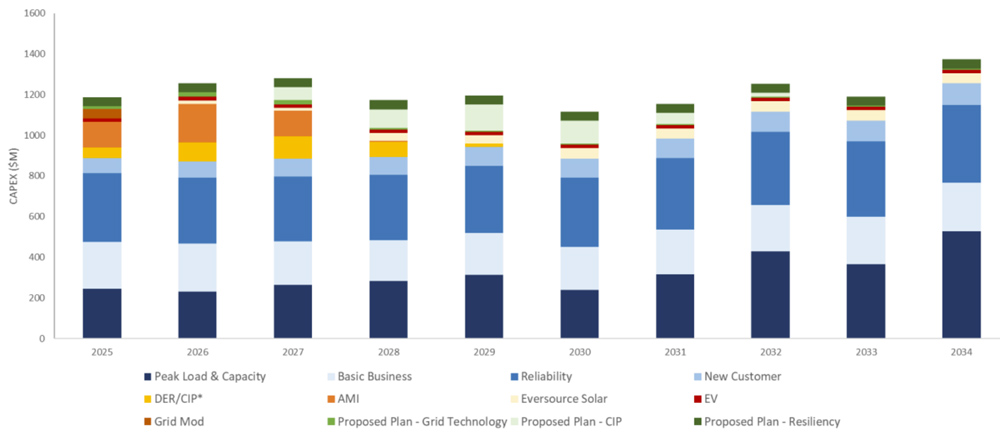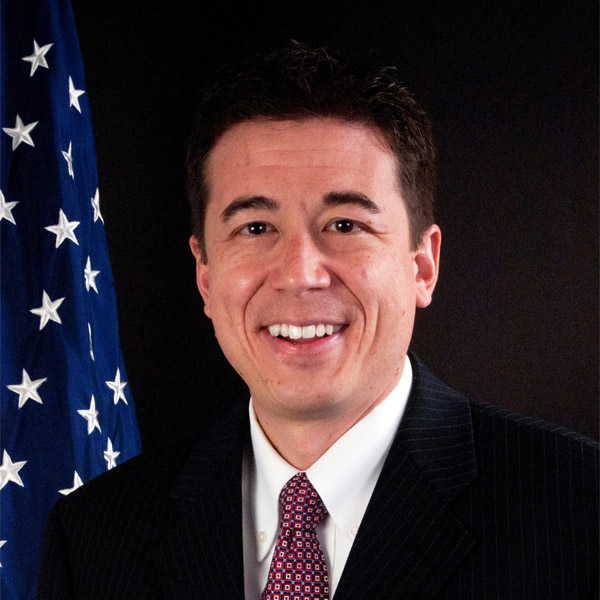Eversource Massachusetts scored 85 out of 100 points, taking the No. 1 spot on the American Council for an Energy Efficient Economy’s (ACEEE) 2023 Utility Energy Efficiency Scorecard, while Florida Power & Light and Ohio Edison held down the bottom of the list with 3 and 2.5 points respectively.
Published every three years, the recently released scorecard reflects the uneven, inconsistent role that energy efficiency plays in U.S. utilities’ efforts to decarbonize their power supplies, help customers cut their monthly energy bills and make their systems more resilient. The 53 utilities ranked on the scorecard, some of the nation’s largest, serve about 79 million residential customers, or 60% of U.S. households, in 31 states, the report says.
With their “enormous customer bases and the ability to scale solutions … the utility sector is perhaps the best positioned of any sector to deliver energy savings to Americans,” said Mike Specian, ACEEE’s research manager and lead author of the report. But, the scorecard shows, many are not doing so.
At the top of the list, 16 utilities managed to earn more than 50 points, and at the bottom, 16 earned less than 25.
Based on 2021 data, the scorecard shows investments in and energy savings from utility efficiency programs trending downward, Specian said. Total energy savings across all 53 utilities were 18.7 TWh in 2021, a 5.4% decrease since ACEEE’s last utility scorecard in 2020, which was based on 2018 data.
Utility spending on efficiency totaled $7.6 billion in 2021, a 4.9% drop from 2018, which, ACEEE said, contributed to a 19% drop in peak demand reduction. On average, U.S. utilities are spending 2.23% of their revenue on efficiency programs.
The figures for individual utilities underline the negative impact of these trends. Entergy Louisiana (No. 43, with 17 points) spent 0.21% of its revenue on energy efficiency, less than one-tenth of the national average. As a result, the utility’s energy efficiency programs shaved a meager 0.1% off its energy sales.
The caveat on such figures, and the rankings in general, is that they are based on data from 2021 and therefore may not reflect any changes in efficiency programs utilities might have made since then. In particular, as load management technology ― like smart thermostats ― evolve, lines between efficiency and demand response are starting to blur.
David Jacot, director of efficiency services at the Los Angeles Department of Water and Power (LADWP), said the public power utility recently consolidated its efficiency, DR and distributed energy services as part of its aggressive efficiency goals, a development not reflected in the scorecard.
But, Specian cautioned, most utilities are not connecting their energy efficiency programs to their decarbonization or emission-reduction goals. “In fact, 28 of our 53 evaluated utilities have established some form of carbon-reduction goals, [but] those targets have yet to work their way into efficiency programs,” he said.
Only the two Massachusetts utilities, Eversource Energy and National Grid, have “explicitly incorporated [greenhouse gas] reduction goals into their energy efficiency programs,” he said.
If and to what extent the billions in funding for energy efficiency in the Inflation Reduction Act will affect utility programs remains uncertain, in large part because, like other IRA programs, the incentives and rebates for efficiency have been slow to roll out.
The IRA’s $8.5 billion for rebates and tax credits for energy-efficient home upgrades will be administered by the states, and the U.S. Department of Energy only recently opened the application process for states to submit plans on how they will ensure the money is used to cut consumer energy bills and emissions. (See DOE Opens Applications for $8.5 in IRA Home Efficiency Funds.)
Utilities could have a central role in these programs for raising customer awareness of the IRA rebates and incentives. Many utilities already offer rebates on efficient appliances and promote their expertise as “trusted advisers” for customers considering home upgrades.
State Regulation
Downward trends notwithstanding, during a recent webinar on the scorecard, Specian focused on the report’s more encouraging findings, such as the correlation between state energy efficiency mandates and utility performance, and increasing investments in efficiency programs for low-income customers.
Utilities at the top of the list, as well as those that shot up in the rankings, often are in states that have set targets for utility efficiency programs.
Michigan, for example, passed its first energy efficiency law in 2008, requiring utilities to meet specific savings goals, and then upped the targets in 2016. Home-state utilities DTE Energy and Consumers Energy have exceeded those mandates every year, putting them in the scorecard’s Nos. 5 and 6 spots, respectively.
Dominion Energy was the scorecard’s most-improved utility, jumping from No. 50 in 2020 to No. 27 this year. Specian attributed its better performance, in large part, to efficiency goals set in Virginia’s Clean Economy Act, passed in 2020.
At the same time, rankings for Ohio utilities nosedived this year after the state legislature passed a law in 2019 ending its energy efficiency standards. Duke Ohio and AEP Ohio fell from No. 18 and No. 21, respectively, to tie for No. 49 this year. Ohio Edison tumbled from No. 34 to the very bottom of the list.
State mandates also can act as a brake on utility innovation. Public Service Electric and Gas rose from No. 42 in the 2020 rankings to No. 25 this year, largely because of New Jersey’s efficiency targets. But Susanna Chiu, PSE&G director of energy services, said regulations set by the Board of Public Utilities create a three-year cycle for planning new utility efficiency programs.
The current cycle, which runs through June 30, 2024, did not include decarbonization or more innovative DR programs. Those will have to wait for the next three-year planning cycle, which will run from mid-2024 to mid-2027, Chiu said. PSE&G is envisioning a one-stop-shop approach in which customers can choose efficiency services that are customized for their homes and their own efficiency and decarbonization goals, she said.
Low-income Programs
Total utility spending on efficiency may have dropped, but the money spent on programs for low-income customers has grown to more than 12% of overall efficiency spending — a 17% increase since the 2020 report — resulting in an 9.5% increase in savings per residential customer, Specian said.
Digging in deeper, ACEEE added new categories on equity to this year’s scorecard, which revealed some of the gaps that still exist in efficiency programs for low-income customers. Baltimore Gas and Electric dropped from No. 5 in 2020 to No. 12 this year, after losing points on some of the new equity categories.
In a separate, written analysis of the utility’s score, Specian praised BGE for its innovative program offerings, including “12 valuable efficiency programs not commonly available across the rest of the country.” Yet the utility lost points for “a lack of efficiency workforce initiatives, low levels of community engagement during program development and a failure to direct customers at risk of utility shutoff toward efficiency programs that could lower their bills,” he said.
Speaking during the webinar, Sanya Carley, professor of energy policy and city planning at the University of Pennsylvania, said efficiency programs can be a critical tool in helping low-income customers avoid disconnection.
A 2020 report from ACEEE found that low-income households have a heavier “energy burden,” spending 8.1% of their disposable income on energy versus the 2.3% for more well-off households.
Only 13 utilities on the scorecard direct customers at risk of disconnection to efficiency programs, Carley said, and existing efficiency programs may not address the needs of such “energy insecure” households. Living in an energy-inefficient home ― with gaps in walls, or windows that don’t close ― is one of the factors that may signal risk of disconnection, she said.
Carley has collaborated with researchers at the University of Indiana to launch an online Utility Disconnection Dashboard, tracking disconnections across the country.
“Some of the same utilities that have the highest rates of disconnection are the ones not directing their customers toward energy efficiency,” she said. “Does this mean that energy efficiency programs are too late to help or too little? The data don’t reveal answers to these questions, but we should of course ask them.”
Efficiency After LEDs
While it was not part of individual rankings, ACEEE did ask utilities what they see as major barriers to energy efficiency.
Responses ranged from the predictable ― inflation, supply chain delays and lack of skilled workers ― to the more existential, such as the rising cost of efficient technologies once programs address “low-hanging fruit,” such as switching out older light bulbs for LEDs.
“Utilities that have been successfully implementing energy efficiency for years reported experiencing market saturation for some efficiency measures and decreasing amounts of remaining savings,” the report says. “Others claimed that there was no technology that could easily fill the gap left by lighting.”
Lakin Garth, director for emerging technologies at the Smart Electric Power Alliance (SEPA), agrees some utilities eventually may face a declining stock of buildings to retrofit.
“You’ve got a certain number of buildings out there, and you’re acquiring all the most cost-effective energy efficiency over a three-, four- or five-year period. … Those same opportunities might not be there in six or seven or eight years,” Garth said. “But that doesn’t mean that the investment itself should decline.”
According to the National Association of Home Builders (NAHB), close to half of all homes in the U.S. were built before 1970 — before the first energy efficiency codes were passed later in the decade. California’s first energy efficiency code was adopted in 1976 and is updated every three years.
Given the large opportunity the NAHB figures represent, Vincent Barnes, senior vice president of policy and research at the Alliance to Save Energy, says the key obstacles to utility energy efficiency programs are utility regulation and business models.
“We don’t treat energy efficiency at par with other energy resources that utilities can respect as an asset,” Barnes said. “It really is about looking at energy efficiency as an energy resource and therefore identifying energy efficiency investments as capital investments — like transmission, like distribution — and the reason we have to do that is because the way the structure is currently set up, the only assets are supply-side assets.”
Energy efficiency programs address customers’ consumption behind the meter, he said. “It’s not until we’re able to identify those investments that are behind the meter, and energy efficiency also, as capital assets, [that we will] be able to actually achieve that greater investment number that we might be looking for.”
One encouraging development, Barnes noted, is that PSE&G has gained approval from the BPU to treat at least some of its energy efficiency investments as “regulatory assets” that can be included in the utility’s rate base.
Chiu confirmed that such efficiency investments do “earn a return … which makes those investments an alternative to pipes and wires.”
LADWP’s ‘Headroom’
In the No. 10 spot, LADWP is the highest scoring of the three public power utilities on the ACEEE scorecard. The other two are Long Island Power Authority (No. 16) and the Salt River Project (No. 23).
As an unregulated utility, LADWP has been able to approach efficiency from a totally different angle, Jacot said. “We really got in earnest behind energy efficiency around 2010 and made it a part of what we call our supply portfolio,” he said. “In other words, we treat energy efficiency as a generation resource … the cheapest marginal generation resource.”
Between 2010 and 2020, the utility cut its retail kilowatt-hours by 15% and is on track for another 15% cut by 2030, Jacot said, and those savings have created “headroom” for LADWP to absorb new load without building new generation.
Vehicle electrification is a case in point. As the utility’s customers plug in their Teslas and Ford F-150 Lightnings, “we’ve created the headroom through energy efficiency; that capacity is already there,” he said.
LADWP will have to build out its system eventually to meet the demands of widespread electrification and more frequent and intense heat waves, but the utility’s aggressive efficiency programs have bought it some time, he said.
Jacot stressed the ability of public power utilities like LADWP to innovate and try out new programs quickly, without going through the drawn-out regulatory approval process investor-owned utilities typically face. With the integration of LADWP’s efficiency and DR programs, Jacot is overseeing and exploring new possibilities for both programs.
“I can coordinate not only overall energy use reduction but smart energy management and load-shifting capabilities,” for example, using smart thermostats and heat pump water heaters, he said.
Heat pumps can be set at a variable speed to reduce overall consumption, and then set to run at specific times of the day for DR, he said.
Like PSE&G, LADWP’s goal is to have a one-stop-shop for customers to take advantage of both efficiency and DR programs, he said.
Next-gen Efficiency
Today’s energy efficiency programs trace their roots to the 1973 oil crisis, when the Middle Eastern countries in the Organization of Petroleum Exporting Countries slapped an embargo on exports to the U.S. to protest American support for Israel.
Efficiency then meant closing schools and businesses, rationing gasoline and reducing speed limits on the nation’s highways to 55 mph.
The challenges today are technologically more complex but could be equally essential to President Joe Biden’s goals of decarbonizing the grid by 2035 and building out a net-zero economy by 2050.
At LADWP, Jacot sees the value of efficiency evolving in different directions as solar and storage come on the grid.
“We’re in a transitionary period where energy efficiency at some points of the day actually doesn’t do you much good,” he said. Specifically, during mid-day peaks in solar production, “energy efficiency isn’t really helping. … So, the quantification of the benefits of energy efficiency on the demand side, the kilowatt side, is very much in transition.”
However, Jacot said, as more storage is deployed to sop up excess solar production, and electrification drives more demand for power, LADWP will “want all the energy efficiency we can get because it increases the amount of available storage and lowers the amount of storage you need to get through the night.”
SEPA’s Garth also sees efficiency as essential for maintaining reliability and affordability as the grid is decarbonized and transportation and buildings are electrified.
“If we’re electrifying or planning to electrify all these uses, then these utilities should be thinking about how to do that in the most efficient way possible,” he said. “Probably the next generation of efficiency programs is how do we electrify responsibly and efficiently and how do we identify the parts of the market that have been overlooked in the past?”
But producing the clean power needed for electrification will require significant capital investments, which utilities could seek to recover through higher rates, he said. “So, it only seems logical that in a decarbonized world … the investments made in energy efficiency are commensurate with the investments that are made to clean up generation or to reduce carbon emissions.”
